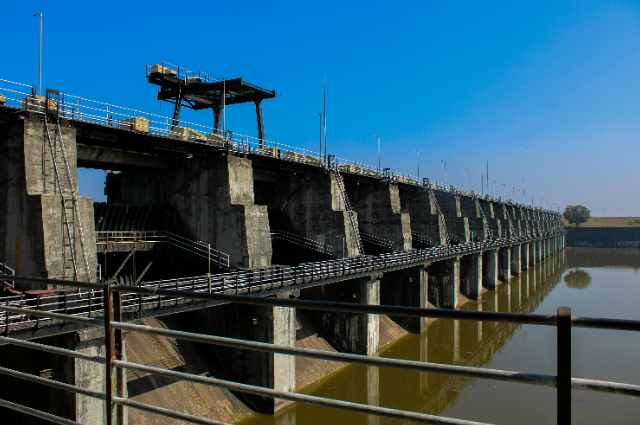
Photo by Anjali Lokhande on Unsplash
India's water infrastructure sector is witnessing a surge in investment with an annual opportunity worth ₹1 lakh crore, according to a report by Share India Securities. The primary driver behind this growth is the government's large-scale initiatives such as the Jal Jeevan Mission, which aims to improve water accessibility and quality across the country.
The report emphasizes that India's water and wastewater market is on a rapid expansion trajectory, expected to grow at a compound annual growth rate (CAGR) of 11.6%, reaching a market size of $17.9 billion by the financial year 2029. This growth highlights the increasing focus on water management as a national priority.
India’s Water Crisis: A Growing Concern
Despite the significant investments, India continues to grapple with water scarcity. The country accounts for 18% of the global population but has access to just 4% of the world’s freshwater resources. This disparity puts immense pressure on India’s water supply, leading to a situation where nearly 66% of the population experiences water stress—a condition where water demand exceeds available supply.
The crisis is further aggravated by the country's inadequate wastewater treatment capabilities. India treats only 30% of its wastewater, leaving a daily shortfall of 60 billion litres. This untreated wastewater not only wastes a valuable resource but also contributes to pollution, making water management even more challenging.
Government Action: Expansion of Wastewater Treatment Plants
Recognizing the urgency of the situation, the Indian government has outlined an ambitious plan to expand wastewater treatment infrastructure. Over 500 new treatment plants are expected to be established by 2027, increasing the country's treatment capacity by 20 billion litres per day. These developments aim to bridge the gap in wastewater management and improve overall water availability.
India’s worsening water stress is reflected in its declining per capita water availability. In 2001, the per capita water availability was 1,800 cubic meters, but this has dropped significantly and is projected to reach 1,300 cubic meters by 2031. If this trend continues, nearly half of India's water requirements may remain unmet in the coming years.
The Global Perspective: A Booming Water Treatment Market
India's challenges with water management mirror a global trend. The worldwide water treatment industry is also expanding with projections indicating a CAGR of 7.5%. This growth suggests increasing awareness and investments in water treatment technologies across the globe.
With rapid urbanization, industrialization, and climate change exacerbating water scarcity, the need for innovative solutions and infrastructure development has never been greater. India must accelerate its efforts in efficient water use, wastewater recycling, and sustainable management to secure its future water needs.
The government's initiatives coupled with private sector participation, have the potential to transform India’s water infrastructure landscape. However, timely execution and long-term sustainability will be key in ensuring that the country overcomes its pressing water challenges.
Innovative Technologies for Water Conservation and Treatment
To combat the growing water crisis, industries and governments worldwide are investing in cutting-edge technologies. Several innovations have emerged to improve water conservation and purification, including:
- Advanced Desalination – Converting seawater into drinkable water to supplement freshwater resources.
- High-End Membrane Filtration – Enhancing the efficiency of water purification through advanced filtration techniques.
- Bio-Filters – Improving wastewater treatment processes by leveraging natural biological systems.
These technological advancements play a crucial role in addressing water scarcity and ensuring the availability of clean water for both industrial and domestic use.
Government Initiatives and Investment Opportunities
Recognizing the urgency of the situation, the Indian government has launched various initiatives to improve water infrastructure. One such major program is the Jal Jeevan Mission, which aims to provide safe and sustainable drinking water to households across the country. This initiative along with other government-led efforts is expected to drive significant investments in the water sector.
The report suggests that India's water industry presents annual opportunities worth approximately Rs 1 trillion. Companies specializing in water treatment, infrastructure development, and technological innovation are poised to benefit from these investments, fostering economic growth while addressing the country’s water needs.
The Role of Public-Private Partnerships and Sustainable Practices
Effectively managing India’s water crisis requires a collaborative effort between the government and the private sector. Public-Private Partnerships (PPP) can play a pivotal role in financing and implementing large-scale water projects. Additionally, the adoption of sustainable water management practices, such as rainwater harvesting, wastewater recycling, and efficient irrigation techniques, will be essential in securing India's water future.
By leveraging technological advancements and fostering multi-sector collaboration, India can mitigate the risks associated with water scarcity and work towards a more sustainable and water-secure future.
. . .
References:
